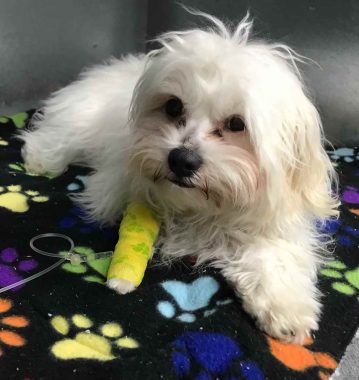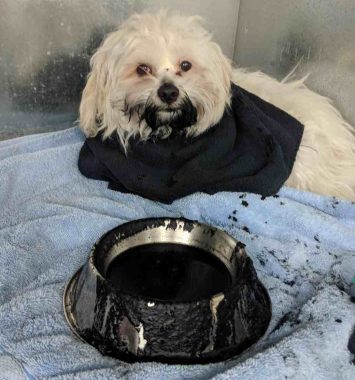Cycads, or commonly known as Sago Palms, are a small group of plants with many unique features. Cycads have been around for over 200 million years – even before the dinosaurs roamed the earth.
The most common signs in dogs ingesting cycad plants are gastrointestinal, hepatic, and neurologic signs, causing vomiting (with or without blood), depression, diarrhoea (with or without blood), and anorexia.
All parts of the plant are toxic, but the seeds contain higher amounts of cycasin (a carcinogenic and neurotoxic glucoside) than do the other parts of the plant. Despite being highly toxic, the seeds and leaves are highly palatable so dogs will often choose to eat them if available.

Gastrointestinal signs may develop within 24 hours, however damage to other organs such as the liver, may not become elevated for 24 to 48 hours. Signs may last from 24 hours to 9 days.
Cycad toxicosis is diagnosed based on a history of known and compatible clinical signs. Although the toxins can be found in advanced blood diagnostics, currently no routine blood tests can test for these compounds.

Treatment of cycad toxicosis is symptomatic and supportive. No antidote for any cycad toxin is available and relies on supportive therapy alone.
Treatment:
It is important to perform gastric lavage or induce vomiting as soon as possible after suspected ingestion. Activated charcoal is then used, which works by trapping toxins and chemicals in its millions of tiny pores, by the process of adsorption (the chemical reaction where elements bind to a surface).
For an animal that has started to show signs of gastrointestinal problems, , sucralfate is used. This oral medication works by lining the stomach and protecting it from acids, enzymes, and bile salts. If gastrointestinal tract hemorrhage is severe, blood transfusions may be necessary.
Supportive fluid therapy should be maintained to ensure the animal maintains hydration, and help dilute the toxin, and blood glucose concentrations should be closely monitored to ensure the animal does not become hypoglycaemic.
Seizures and tremors may be controlled with diazepam an anti seizure medication.
Continual monitoring is required as the animal may develop secondary effects, such as liver failure, coagulopathy, hepatic encephalopathy, hypoproteinemia, or renal failure.
A patient’s prognosis is good if medical intervention was sought promptly post cycad ingestion. However, if the patient is showing clinical signs, its prognosis is guarded. The reported mortality rate in dogs with clinical signs is 32.1%.
The best way to prevent your pet from cycad toxicity is to remove any cycad plants around your home or pets environment. Seek medical treatment urgently if your pet does come in contact with these plants.





